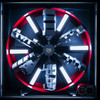

How is it made? The design phase at TAG Heuer
Since the founding of the Heuer company in 1860, exceptional design — from technical innovation to avant-garde style — has been at the heart of the art of watchmaking. Read on to discover how TAG Heuer watches are designed, from the very first idea to the final creation, at the company’s headquarters in La Chaux-de-Fonds, Switzerland. Are you sitting comfortably? Then let’s begin at the start.
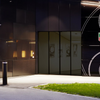
According to an unspoken rule, the design process actually begins long before the pencil touches paper (or the stylus meets the screen). The truth is, an innovative design starts by finding and hiring the very best of the best for the design team. These are creative minds who not only understand the aesthetics of the final product but can also balance visual appeal with the functional performance of a successful watch model. With their ingenuity, insight, and inspiration, these watchmaking experts are the ones who first set the pendulum in motion — quite literally.

The first step in any design process is to create its digital drawing or sketch. This is the imaginative, conceptual phase. The purpose of 2D and 3D rendering — the creation of photorealistic images complete with shadows and reflections — is to define execution, materials, and colors, while resin prototypes are used to refine proportions and ergonomics.
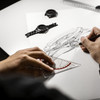
Next — and it’s no exaggeration to call this an artistic process — a 3D model of the watch’s exterior is created based on the ideas from the initial sketches. This step allows for the design to be fully finalized and refined in every detail before moving into the engineering phase. Beauty and functionality must be skillfully combined. Building the watch in 3D ensures that no detail is left to chance, while also validating the ergonomics of the final design.

The next stage is the 3D printer. Based on the digital sketch, the design team prints a 3D prototype model of the watch in resin. This process happens step by step, allowing them to see the watch gradually come to life and ensure that every detail is considered. Even the metal bracelets can be printed in resin to demonstrate adjustments to the size or design of the links. The entire printing process can take up to 12 hours, but it’s well worth the time — such a prototype helps designers better express their ideas and choose the right aesthetic finishes before bringing them to life in metal.
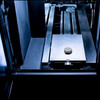
The clear and realistic construction of both the internal and external parts of the model also helps assess the feasibility of the design and serves as a basis for any necessary adjustments to production requirements and costs. This process involves close collaboration with the designer while adhering to critical constraints such as water resistance, manufacturing tolerances, and production workflows.
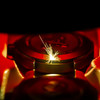
With the design engineers now based at TAG Heuer’s headquarters, the process has become much more streamlined and closely integrated with other departments. It is now clearer what is feasible, where there is room to push boundaries, and how solutions can be developed — all as efficiently as possible. This also means that aesthetic goals can be balanced with technical requirements and supply capabilities.

With the resin mock-up in hand, the designers submit their fully developed concept to an internal decision-making committee for approval. Manufacturing requirements must be considered from every angle — quite literally — and compromises often have to be made between the wishes of different departments. Reviewing every aspect of the 3D model and prototype takes time and careful attention, often lasting several days. Modifications to existing designs, while still complex, are simpler; completely new designs, however, require lengthy discussions and troubleshooting. In addition to passion and dedication, designers must also possess strong communication and negotiation skills — just like in any good relationship!
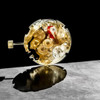
Once the design has been approved, it’s time to move on to the metal prototype. At TAG Heuer, prototypes accurately reflect what the customer will eventually see in the boutique. They are used to eliminate potential production or manufacturing issues — a lengthy but essential process to ensure that the final product is both technically and aesthetically perfect.

The proof of the pudding is in the eating — and for a watch prototype, it’s when it’s strapped onto the wrist. This is when the model can be tested in action, the effects of aesthetic finishes such as polishing can be evaluated, and decisions can be made about any necessary adjustments. By this stage, our TAG Heuer watch has moved from infancy to adolescence and is almost ready to step out into the real world...
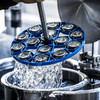
Luczay Szabolcs

